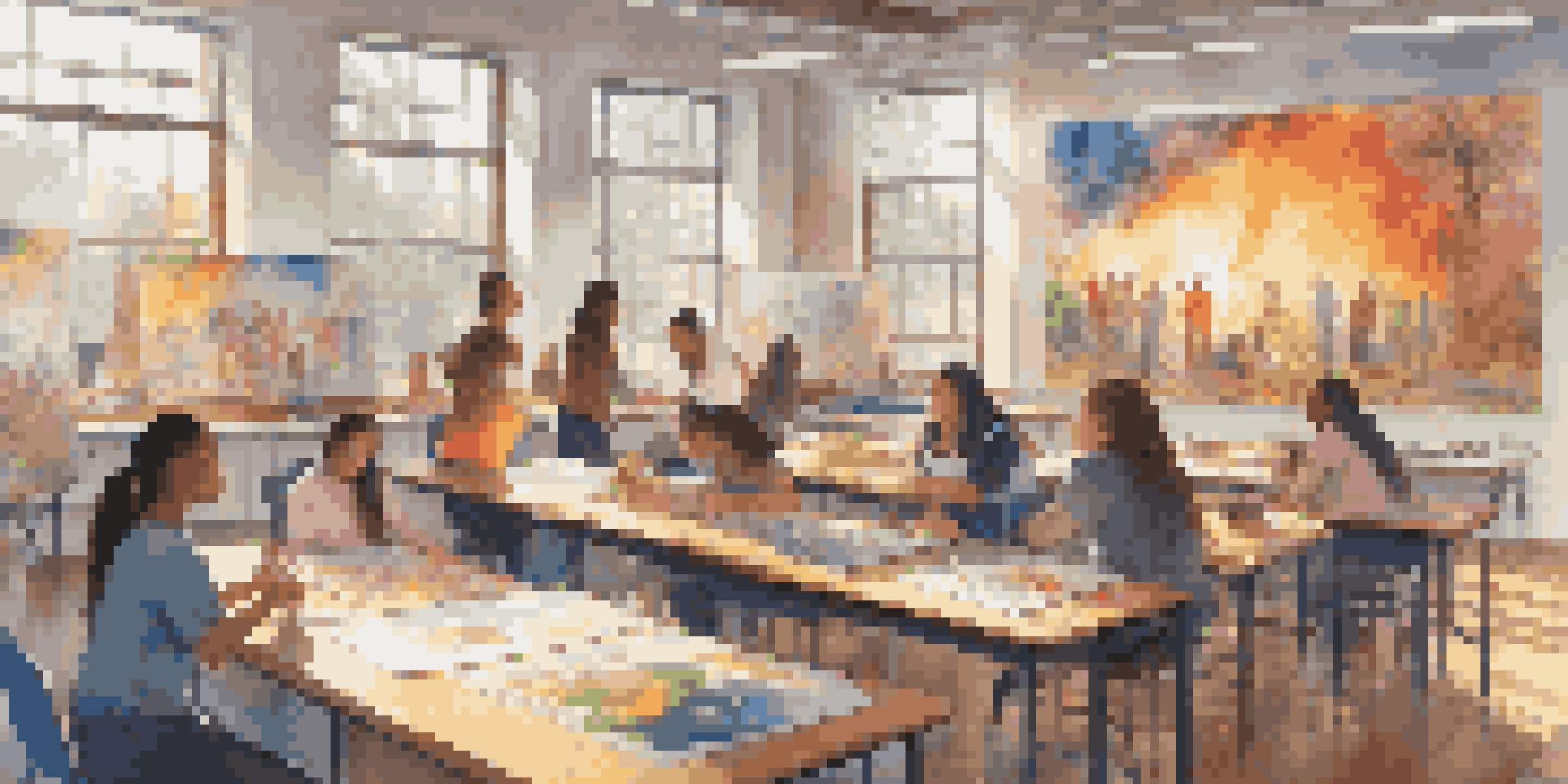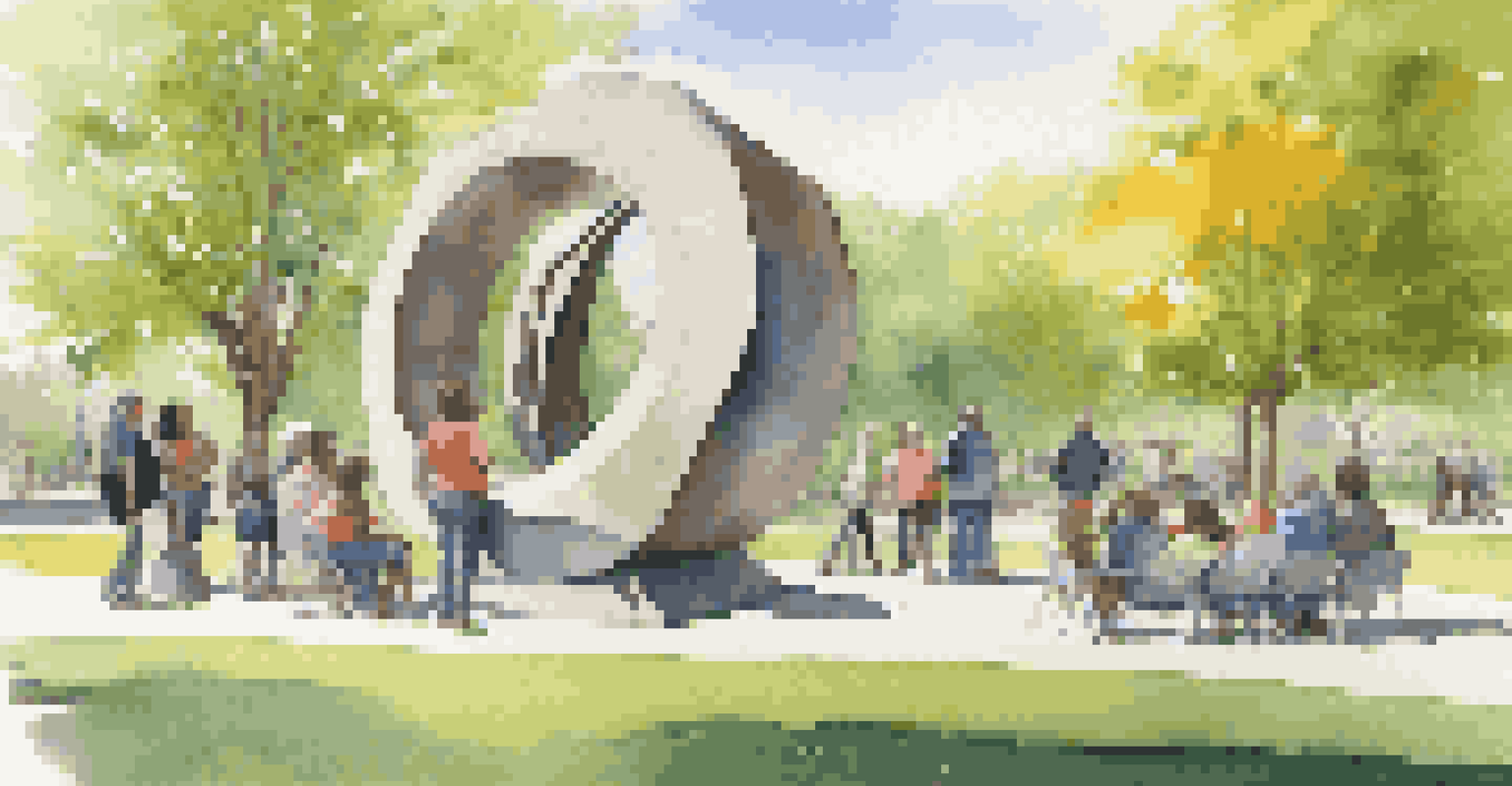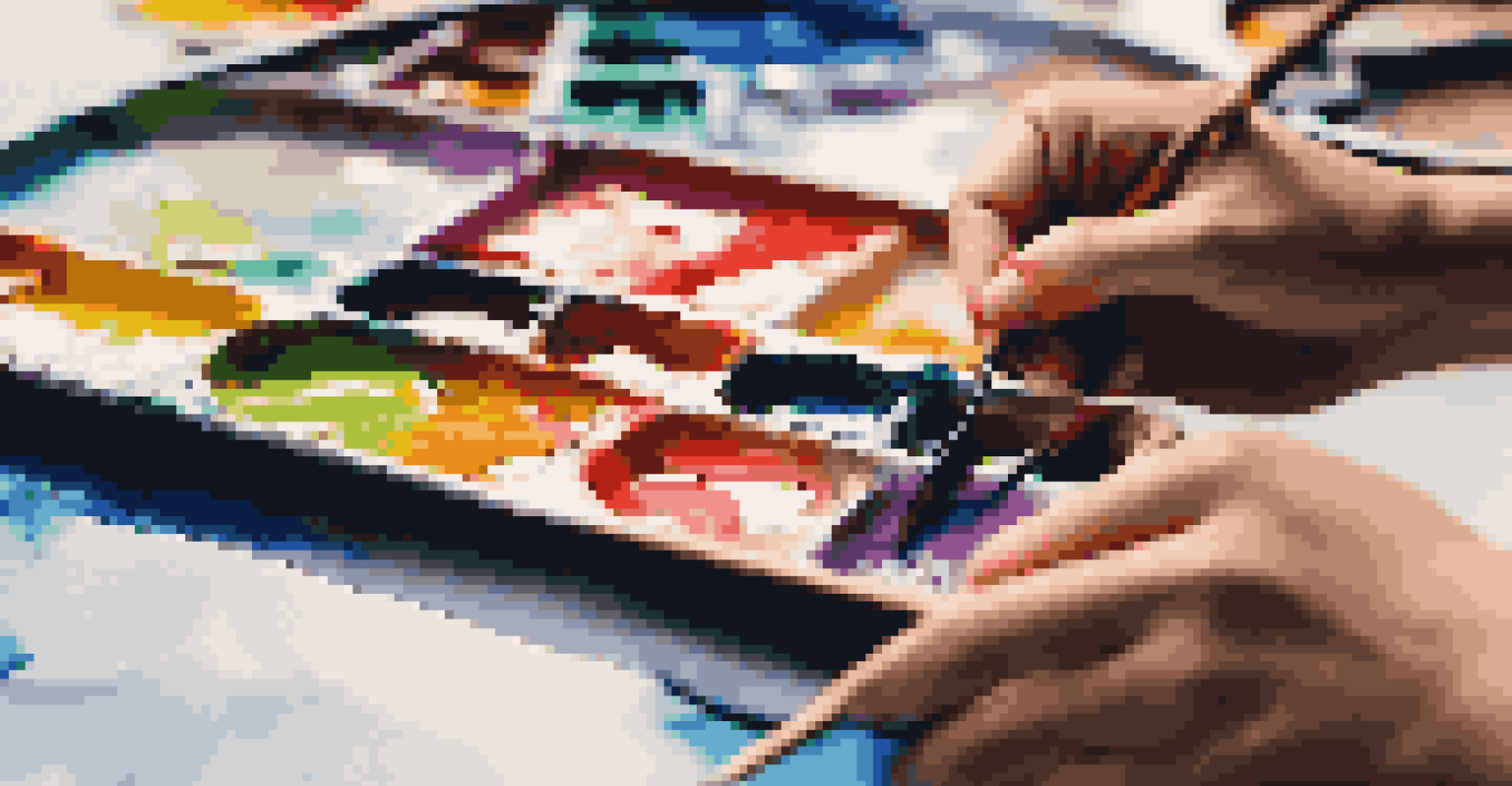Exploring the Role of Art Education in Policy Development

Understanding the Foundation of Art Education
Art education provides a framework for creativity, critical thinking, and self-expression. It encourages students to explore their identities and communicate their ideas effectively. By learning various artistic forms, from visual arts to performing arts, students gain unique perspectives that enrich their understanding of the world.
Art is not freedom from discipline, but disciplined freedom.
Moreover, art education fosters collaboration and teamwork as students often work on projects together. This collaborative spirit not only enhances social skills but also prepares students for future professional environments where teamwork is essential. Indeed, these skills are invaluable in any policy-making context.
Ultimately, a solid foundation in art education equips individuals with the ability to think outside the box, a trait that is crucial when addressing complex societal issues through policy development.
Art Education as a Catalyst for Critical Thinking
One of the key benefits of art education is its ability to nurture critical thinking. Students learn to analyze and interpret various forms of art, which encourages them to question assumptions and explore different viewpoints. This analytical mindset becomes especially important in policy development, where understanding multiple perspectives can lead to more effective solutions.

For instance, when students engage with politically charged art, they often explore themes of justice, equity, and societal change. This engagement not only deepens their understanding of art but also sparks discussions about current events and policy implications. Such dialogues can empower future leaders to advocate for meaningful change.
Art Education Fuels Creativity
Art education nurtures creativity, critical thinking, and self-expression, equipping students with essential skills for personal and professional growth.
Thus, by fostering critical thinking through artistic exploration, art education prepares students to tackle the complexities of policy-making with an informed and open-minded approach.
The Intersection of Art and Social Change
Art has historically played a pivotal role in social change, and art education amplifies this connection. Through various projects and discussions, students learn how art can influence public opinion and mobilize communities. This understanding inspires them to become active participants in societal transformation.
The role of the artist is to make the revolution irresistible.
For example, students might study movements like the Harlem Renaissance or the impact of street art on urban activism. By analyzing these examples, they see how art can challenge the status quo and inspire policy shifts. Such lessons are instrumental in shaping the next generation of policy advocates.
In essence, art education does more than teach creative skills; it empowers students to harness the power of art as a tool for social change, equipping them with the knowledge to influence policy.
Building Empathy Through Artistic Expression
Art education nurtures empathy, a crucial element in effective policy development. By engaging with diverse artistic expressions, students learn to appreciate different cultures and experiences. This emotional connection is vital when crafting policies that serve varied communities.
For instance, through storytelling in theater or narratives in visual arts, students gain insights into the lives of others. Such experiences can profoundly impact their understanding of societal challenges and the importance of inclusive policies. Empathy becomes the driving force behind compassionate decision-making.
Empathy Drives Effective Policies
By engaging with diverse artistic expressions, art education fosters empathy, which is crucial for crafting inclusive and compassionate policies.
Ultimately, the empathy cultivated through art education leads to more thoughtful, community-oriented policies that reflect the needs of all constituents.
Collaboration Between Artists and Policymakers
The collaboration between artists and policymakers can lead to innovative solutions for societal issues. Artists bring a unique perspective to the table, allowing policymakers to see problems in a new light. This partnership can enhance community engagement and foster more inclusive policy-making processes.
For instance, public art projects often involve collaborations that address local issues, encouraging community dialogue and participation in policy discussions. Artists can help visualize data or concepts that may be difficult to grasp, making policies more accessible to the public.
Thus, fostering relationships between artists and policymakers not only enriches the policy-making process but also ensures that diverse voices are heard in shaping the community's future.
Incorporating Art Education into Policy Frameworks
To maximize the benefits of art education, it's essential to incorporate it into policy frameworks at various levels. This means advocating for arts funding, ensuring access to quality art programs in schools, and recognizing the value of art in community development. Policies that support art education can have long-lasting impacts on society.
For example, cities that prioritize arts education often see increased community engagement and improved social cohesion. By viewing art as a fundamental component of education, policymakers can create environments that nurture creativity and innovation.
Collaboration Enhances Policy Making
Partnerships between artists and policymakers can lead to innovative solutions and more inclusive community engagement in the policy-making process.
Incorporating art education into policy frameworks ultimately leads to a more vibrant, culturally rich society that values diverse expressions and perspectives.
Challenges Facing Art Education in Policy Development
Despite its importance, art education often faces challenges in policy development. Budget cuts, undervaluation of the arts, and lack of awareness about its benefits can hinder the growth of art programs. These obstacles can lead to a reduced focus on creativity in educational settings, impacting future policy advocates.
Furthermore, the competition for funding among various subjects can marginalize art education, making it seem less essential. This perception can limit opportunities for students to engage with the arts and develop the skills necessary for effective policy-making.

Addressing these challenges requires a concerted effort from educators, artists, and policymakers to advocate for the importance of art education and its role in shaping informed, creative leaders.